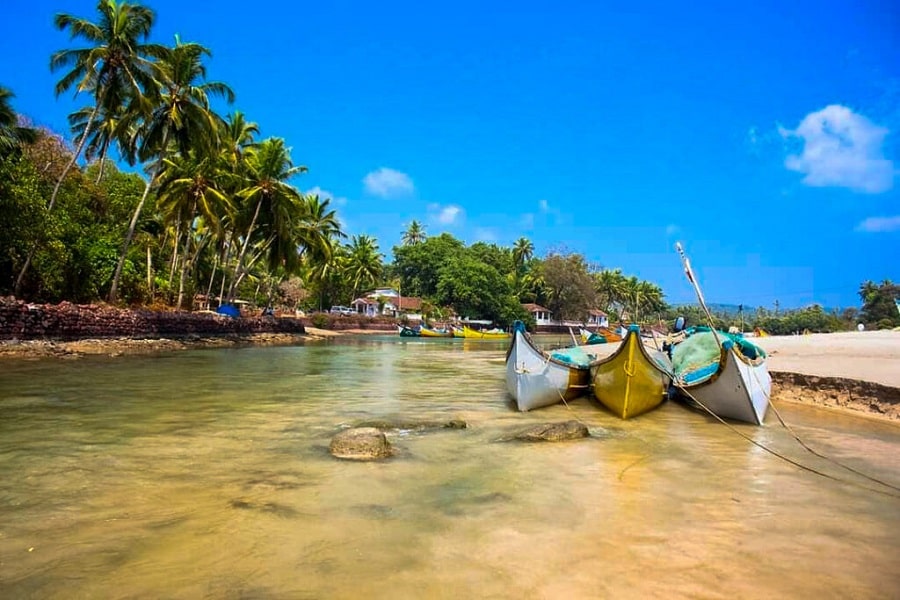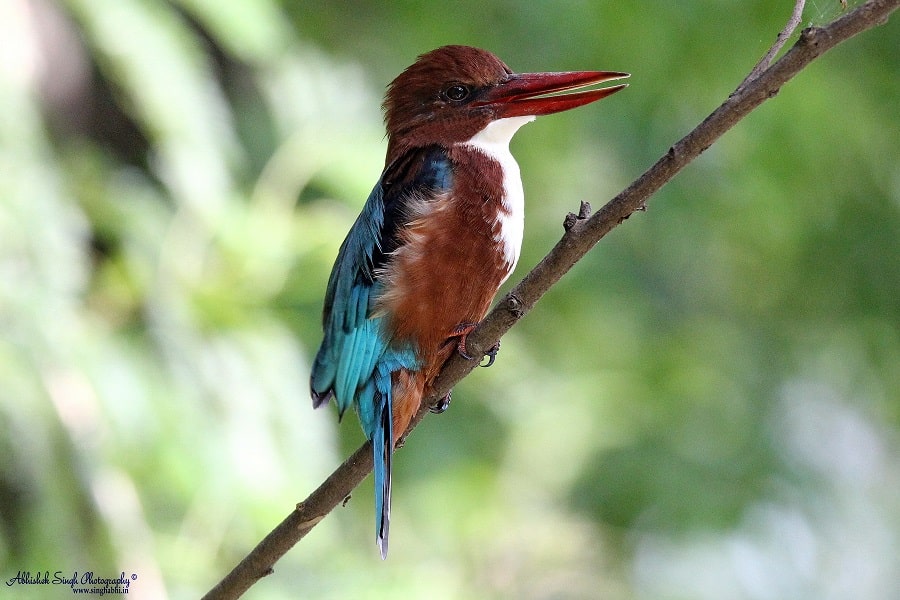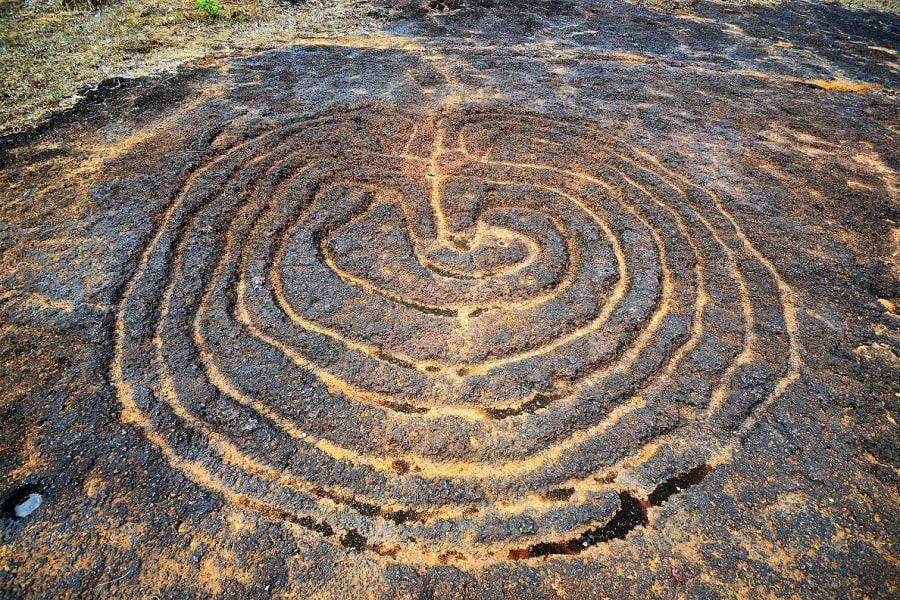As India’s favorite beachside destination, Goa needs no special introduction. Everyone can invoke an image of Goa as a land of sea, sand and palm fringed sunsets. For backpackers looking for the next big adventure, lovers looking for a cozy cove or even families looking for a rejuvenating holiday, Goa is always on the list of prospective holidays. And yet with the influx of a class of weekend tourists who only end up on the trio of North Goa beaches - Calangute, Baga and Anjuna - the Goan experience can get a little stereotypical. The truth is that there is no bound to the things that you can do in Goa , and like aged cashew feni, you need to experience it while taking your time.
Goa is actually a mix of various conflicting histories, which in many ways differentiates it from the rest of India. Firstly, as opposed to the British rule, Goa was ruled by the Portuguese, who were the first colonial explorers to reach the Indian shores and coincidentally, the last to leave. At different times in the course of history, the land that we know as Goa was ruled by the Adilshah, the Marathas and the Portuguese. It was annexed into Indian territory in 1961, more than 14 years after Indian independence. Such diverse history is reflected even today in the Goan way of life, the language, architecture and culture. At the same time, Goa is also a land of unparallelled natural beauty. The rocks here are a result of intense volcanic activity from eons ago when the continents were forming. Its ecosystem fosters some exotic bird and animal species, and a network of rivers, rivulets and mangroves dotted with islands spread across the Goan landscape. Here are some of the most popular and some not so popular locations in Goa that you have to visit.
 |
| Fishing boat in Palolem in Goa - Source |
Goa Beaches
Separate articles, in some cases complete books, have been written about each Goan beach, but it suffices to say over here that every beach comes with its own individual character. Geographically, Goa enjoys a coastline of over a hundred kilometers. The state itself is divided horizontally into north and south by the Zuari river. The now popular tourist beaches are mostly a result of European tourism that began in the 70s, with Goa being a part of the legendary hippie trail. In the north, the most popular beaches are Candolim, Calangute, Baga, Anjuna and Vagator, which stretch across a singular coastline divided by rocky hills. The Vagator beach marks the end of this coastal stretch, punctuated by the meeting point of the Chapora river with the sea. Further up north, you find slightly more unexplored beaches of Morjim, Ashwem, Mandrem and Arambol. Querim is the furthest up north and marks the end of the Goan coastline.
In the south, some of the more well known beaches are Bogmalo, Uttorda, Majorda, Colva, Benaulim, Varca, Mobor, Cola, Agonda, Palolem and Patnem. Apart from these, Goan beaches come in all shapes and sizes, and most of the times it’s the ones you have never heard of before, that surprise you the most. Popular beaches in Goa are generally dotted with shacks that offer refreshments like food and beverages along with other amenities. It is important to know that most of the shacks are closed for business during the tourist off season, which lasts from June to November, though the major resorts here will still be operational.
 |
| Baga Beach, Goa - Source |
Architecture and Cultural Heritage of Goa
A separate mention has to be made about the cultural and historical heritage of Goa. The state is well known for its great church and temple architecture, which is a confluence of different building traditions from across the world. Perhaps the most popular monument of Goa is the Basilica of Bom Jesus, which houses the last remains of St. Francis of Assissi. The saint’s body is exhumed for display once every ten years, coinciding with major festivities. The Basilica of Bom Jesus is one the largest of its kind in Asia, and a UNESCO World Heritage Site. It is also one of the only few stunning examples of baroque architecture in India. The ruins of the St. Augustine’s Tower which are nearby are also a sight to behold. The 500 year old Reis Magos Church located just at the base of the Reis Magos fort is another example of beautiful Portuguese architecture.
 |
| The Basilica of Bom Jesus in Goa - Source |
The Goan coastline is lined with forts built by some of the land’s many rulers. Some of the most stunning ones include Cabo de Rama, Reis Magos, Aguada and Chapora. A part of the Aguada fort is in fact now a state penitentiary. Goa is also a land of many historically important temples. The most famous among these is the 450 year old Mangueshi Temple in Ponda, Goa, dedicated to Shiva and exhibiting intricately carved domes, balustrades and a beautiful seven storied deepastambha or lamp tower, which is still lit during festive times.
- Also Read: 5 Reasons to Go solo in GOA
Nature and Wildlife in Goa
Goa is replete with its share of natural beauty, and it is not uncommon for travellers to visit Goa for the specific purpose of immersing themselves in this natural heritage. With a large coastline, a vast network of rivers, dense forests and lush mangroves, Goa has a mix of ecosystems that foster exotic animal and plant life. Not to mention the migratory birds and animals that visit the state during specific times of the year. A prime example of this is the Olive Ridley Sea Turtle, which visits the Goan shorelines during the months of September and October. The traditional spotting grounds for the turtles are either the Morjim beach in the north or the Agonda beach in the south. Environmentalists across the state are petitioning against the encroachment of these breeding grounds by the tourism industry and trying to establish strict norms for accessing these spaces for the endangered species.
 |
| A White throated Kingfisher seen along the Mandovi River in the Salim Ali Bird Sanctuary in Goa - Source |
Hidden Gems in Goa
- Tambdi Surla Temple
The Tambdi Surla Temple often goes amiss in the list of things to visit in Goa, but it is one of India’s greatest treasures. It is a 12th Century Shaivite temple of Mahadev, notable as the oldest temple in Goa. Located deep in the western ghats about 65 km from Panjim, the temple is surrounded by the Mollem National Park, which in itself is a treasure trove for wildlife enthusiasts. One of the most notable aspects about this temple is that the sanctum sanctorum is completely carved out of a single basalt boulder. Its secluded location among the dense forest and its exquisite workmanship make it a true hidden gem for explorers.
- Usgalimal Rock Carvings
 |
| The Usgalimal Rock Carvings in Goa - Source |
Another extremely rare site in Goa is the Usgalimal rock carvings found on the banks of river Kushavati in south Goa. On a bed of laterite about 100 feet in length, more than 120 drawings of animals, humans, ritual objects, hunting scenes, etc. were carved by the nomadic inhabitants of the land about 10,000 years ago. Apart from the Bhimbetka caves in Madhya Pradesh, this is one of the very few sites of prehistoric art available for viewing in India. The drawings themselves are extremely evocative - like one where a woman and a child are shown connected with an umbilical cord, and another which depicts a dancing peacock. You have to travel deep in the interiors of Goa, in the Sanguem taluka of the South Goa district, to witness this ancient marvel that somehow feels larger than life itself.
Whenever you decide to visit Goa, do take the time to research its vast and varied history and the wonderful hidden treasures of this wonderful treasure.

0 comments:
Post a Comment